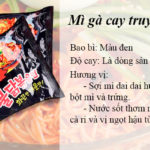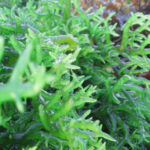Kimbap, a beloved dish in Korean cuisine, has gained popularity beyond its national borders, including in Vietnam. But how well do you know this dish? Can you distinguish it from sushi, and do you know how to store it overnight without spoilage? Let’s explore these questions and more as we delve into the world of Kimbap.
1 What is Kimbap?
What is Kimbap?
Kimbap, also known as Gimbap, is a dish that combines two main ingredients: seaweed (kim) and rice (bap). These ingredients are rolled together to form a delicious cylinder. The filling can vary, including ingredients such as canned tuna, ham, spinach, danmuji (yellow pickled radish), various other vegetables, and even cooked carrots or raw cucumbers. Kimbap is typically served with soy sauce or kimchi on the side.
This rice and seaweed roll is a popular snack in Korea, often enjoyed during light meals, picnics, or even on the go while commuting to work or school.

Common Types of Kimbap
While there are countless variations of Kimbap, here are five of the most popular types:
Mayak Kimbap
Mayak Kimbap is a smaller version of the traditional Kimbap, often referred to as mini Kimbap. It is typically filled with classic ingredients such as yellow pickled radish, ham, and crab sticks. Unlike regular Kimbap, Mayak Kimbap is usually eaten whole without cutting it into slices, and it is often paired with soy sauce or kimchi.
 Chamchi Kimbap
Chamchi Kimbap
Samgak Kimbap
Samgak Kimbap takes a unique approach by using only one type of filling, such as salmon, tuna, or kimchi, which is placed inside a triangle-shaped rice ball wrapped in seaweed. To keep it fresh for longer, it is often wrapped in a layer of plastic film.
 Samgak Kimbap
Samgak Kimbap
Chungmu Kimbap
Chungmu Kimbap is the simplest form of Kimbap, consisting of only seaweed on the outside and a filling of rice, with a size equivalent to two fingers. It is commonly paired with spicy squid or kimchi.
 Chungmu Kimbap
Chungmu Kimbap
Nude Kimbap
Unlike other types of Kimbap, Nude Kimbap features the rice on the outside, wrapping the seaweed within, creating a unique and surprising twist.
 Nude Kimbap
Nude Kimbap
2 Differences Between Sushi and Kimbap
Sushi, a well-known Japanese dish, shares some similarities with Kimbap in terms of ingredients, including rice, seafood, and sometimes seaweed (Maki-sushi). However, there are distinct differences in their preparation and taste.
A comparison table between Sushi and Kimbap:
| Sushi | Kimbap | |
| Rice | Sushi rice is typically seasoned with vinegar and sugar, and only white rice is used. | Kimbap rice is seasoned with sesame oil, giving it a sweeter taste. Additionally, Koreans often use brown rice along with white rice. |
| Fillings | Sushi fillings are usually raw seafood, eggs, or vegetables. | Kimbap uses cooked and seasoned ingredients such as canned tuna, kimchi, ham, sausage, eggs, and more. |
| Dipping Sauce | Due to the use of raw ingredients, sushi is typically dipped in soy sauce, mustard, or sweet and sour pickled ginger. | Kimbap, on the other hand, does not require a dipping sauce as the fillings are already seasoned. It is often enjoyed with mayonnaise or kimchi on the side. |
Rice
Sushi rice is typically seasoned with vinegar and sugar, resulting in a distinct taste. Kimbap rice, on the other hand, is seasoned with sesame oil, giving it a noticeably sweeter flavor. Additionally, while sushi exclusively uses white rice, Kimbap is often made with a mix of white and brown rice, adding a subtle nutty flavor and a healthier twist.
Fillings
Sushi fillings are usually raw seafood, such as salmon or tuna, along with eggs or vegetables. In contrast, Kimbap uses cooked and seasoned ingredients, ensuring food safety and enhancing the flavor. Common fillings include canned tuna, kimchi, ham, sausage, eggs, and more, creating a hearty and flavorful roll.
 Sushi and Kimbap differ in their rice and fillings.
Sushi and Kimbap differ in their rice and fillings.
Dipping Sauce
Due to the use of raw ingredients in sushi, it is typically accompanied by soy sauce, mustard, or sweet and sour pickled ginger. On the other hand, Kimbap’s fillings are already seasoned, eliminating the need for a dipping sauce. It is often served with mayonnaise or kimchi on the side, adding a creamy or spicy kick to the dish.
 Sushi is paired with soy sauce and mustard, while Kimbap often goes with mayonnaise.
Sushi is paired with soy sauce and mustard, while Kimbap often goes with mayonnaise.
3 How to Store Kimbap Overnight Without Spoilage
To store Kimbap overnight and enjoy it fresh the next day, simply place the rolls in a plastic bag or container and seal it tightly before storing it in the refrigerator. This method will keep your Kimbap tasty for up to 1-2 days.
If you plan to eat Kimbap for breakfast, you can prepare the ingredients the night before and roll it fresh in the morning.
 Store Kimbap in a sealed plastic bag to maintain freshness.
Store Kimbap in a sealed plastic bag to maintain freshness.
Additionally, it is important to note that exposing the seaweed to air for extended periods can make it tough, and the rice may dry out, affecting the overall quality of the Kimbap. Therefore, it is best to consume Kimbap soon after preparation or store it properly.
We hope this article has provided you with valuable insights into the world of Kimbap, including its variations, its distinction from sushi, and the best way to store it overnight. Enjoy your Kimbap adventures!
Noodles’>Exploring the Rise of Popularity of Korean Spicy Samyang Noodles
How to Make Agar Agar Powder Soft and Crispy
Are you curious about the different types of agar powder available on the market? Let us help you in deciding which is best for the delicious agar jelly dessert you love so much. We will explain how to differentiate between different types of agar powder and how to choose one according to your needs.






































